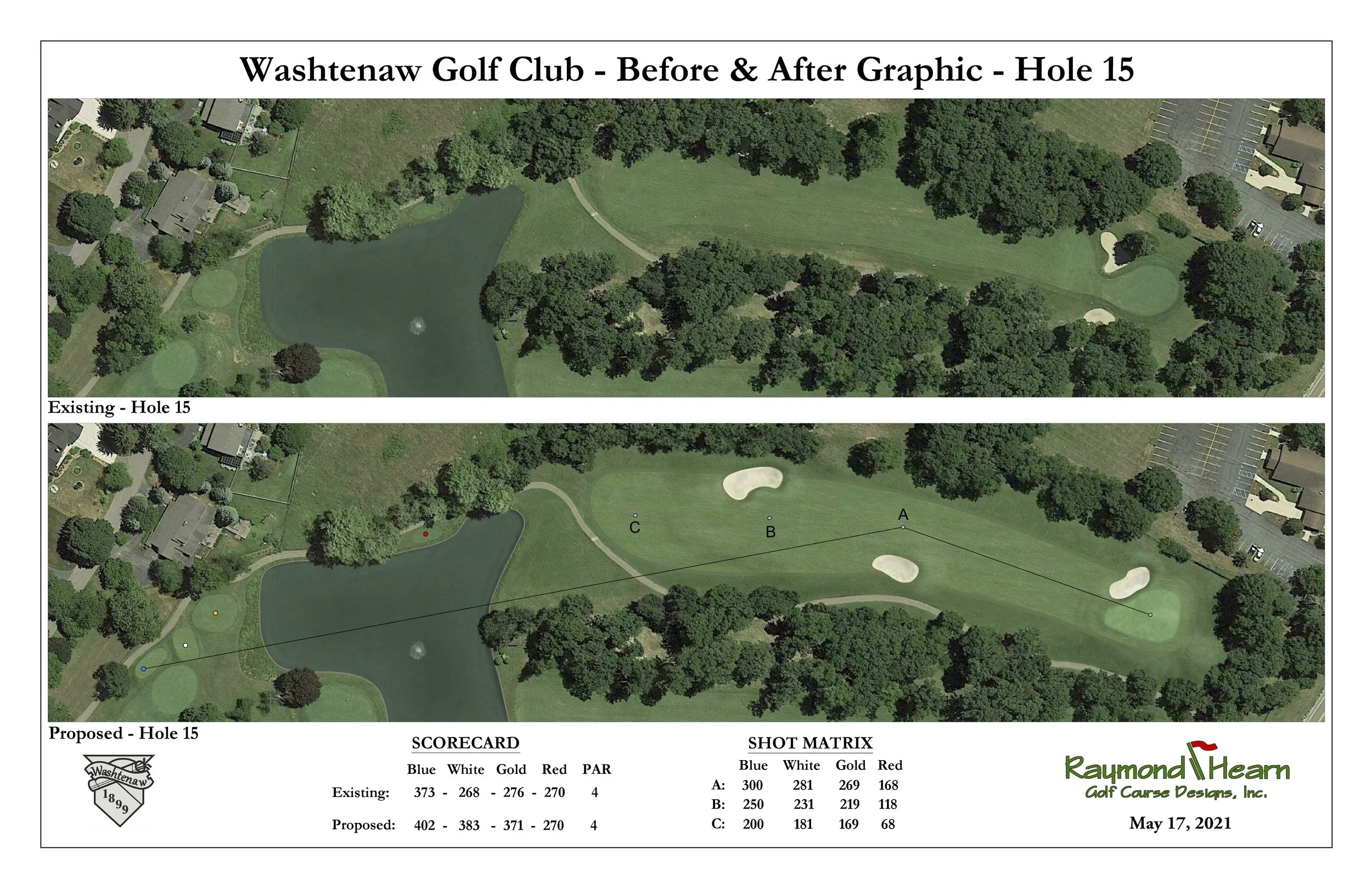What’s Old is New Again: Stepping Back in Time
The Historical Transformation of Washtenaw Golf Club
By Tom Lang
The folks at Washtenaw Golf Club, the formerly private club for more than 120 years that became a public venue in 2020, think it’s pretty darn cool they are the current keepers of one of Michigan’s most historic golf courses, dating back to 1899, that’s still in operation today.
We do too.
And the ownership group, led by Michigan Golf Hall of Fame member and golf instructor Dave Kendall, thinks golfers will agree that the transformation they are giving it – to make it look and feel a little more like golf was over a century ago – is cool.
The most visually noticeable cues will be restoring greens of some original nine holes to their squared-off corners, which was a way of life for early golf in Britain and Scotland. The original Washtenaw holes were designed by Englishman Herbert ‘Bert’ Way, who laid it out the same year he tied for runner up in the 1899 U.S. Open at Baltimore Country Club at age 26.
Masterplan leader Ray Hearn said the squared greens were just ‘in vogue’ in golf’s early years overseas and it translated to America. Washtenaw’s green complexes fully support its original square edges.
More tee boxes have been added as well – a handful of longer tees that extend the course roughly 300 yards from the tips to about 6,900 yards, and several new forward tees to shorten the course about 700 yards for those who want to play forward. And about 250 trees have been removed where their canopies had overgrown into the fairways over the decades.
“I think that broadens our appeal,” Kendall said of the adjusted 6-tee color options. “We want the shorter tees for those who want them. If it expands the appeal and makes people want to play here more because they feel like they can get around, then that’s great. Who does it bring any harm to? It helps everybody.”
Another Michigan Golf Hall of Famer, Brian Cairns, a former national PGA Senior Player of the Year, mentioned that just a month after Kendall and partners acquired the property, Covid-19 shutdowns hit.
“But, Dave rolled up his sleeves and began his work, slowly but surely he is rolling back time and helping to restore the golf course,” Cairns said. “With his vision, along with (designer) Ray Hearn, some of the old characteristics are coming back, making it an old, cool, playable golf course. Some tee additions are stiffening the length but keeping all the original concepts intact. Thanks to Dave and his partners a classic has been saved.”
Cairns’ main student, 2021 U.S. Amateur winner James Piot, shows up regularly at Washtenaw when preparing between pro tournaments.
“Washtenaw is one of my favorite spots in the state of Michigan,” Piot wrote in an email. “What really makes it a great course for me to play and practice at is the fact that it has some of the best greens in the state of Michigan. Not only are the conditions always great, but the design and layout of them is what really makes the place special. Even though it may be what's considered a shorter golf course, the greens make it my favorite spot to practice and play at. Going back toward the original design has been a really cool thing to watch unfold in person… it allows the course to be more playable for any skill level golfer out there.
“For me, it's my favorite place to go out for wedge work, and work around the greens, since it's the most identical to a Tour style set up and speed.”
Hearn said old aerial photos from 1930 were used as a guide. Then they did soil probes “like an old archeology dig, and found cinder ash that helped locate the old green corners to match against the aerial photos.
“We are able to bring back more cup areas that have been lost over the decades, many of them on the original nine holes. That just gives Dave, and I, tingles,” Hearn added. “We are slowly but surely bringing back what many would call the golden age look and feel of the course… It has been an absolute blast.”
The changes at Washtenaw began in late 2021 and will take place one step at a time for potentially the rest of this decade, in a pay-as-they-go methodology instead of one huge splash.
“We just want to fund it as we go along and keep making it better than it was before, without shutting down,” Kendall said. “If you only visit once a year, we’d like you to be able tell that we’re doing something here and it looks better – the subtle things that make you think this place matters to them and we take pride in it.
“I don’t think it’s harder to maintain the course the way they did (a century ago). I think it looks cool and it’s consistent with its history. Why wouldn’t we celebrate that? I’ve never had more fun in my life.”
And if you are a golfer who visits, you might say the same thing.
Editor’s note: Bert Way is also credited by GolfPass as designing the ‘Regulation Course’ at Country Club of Detroit two years earlier, in 1897, but it was several miles away from the current day location. Way also did five more courses in the greater Cleveland area.


